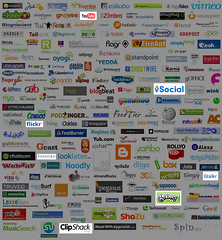The Resurgence of Flash

When Flash first started taking off in the late 1990's, it was the first time most people saw animation on the web. For a lot of people, Flash gave them a way to create web experiences that hadn't been possible before. It was exciting, it was pretty easy to jump in and many people did so. Unfortunately, this gave people a bad taste of Flash. We saw a lot of "skip intro" buttons because people thought it would be fun to have an animation as their start page. Jakob Nielsen wrote his famous "Flash : 99% Bad" article which talked about Flash as a distraction and a usability nightmare.
But slowly, Flash has started to turn the corner. In 2002, Jakob wrote an addendum declaring that "Flash Now Improved" and listed Design Guidelines for Flash usability. With Flash Player version 7, we saw the beginnings of seamless video on the web which would allow for companies like YouTube and Brightcove to flourish along with putting Flash front and center in people's minds. Most of them didn't realize it was Flash that was making their video experience so easy, but among developers and the digerati, Flash started to get more attention.
When Flex 2 was released to the public, it gave developers a way to jump into the world of Flash in a way that made sense to them. Keyframes and timelines aren't things developers want to think about, and the Flex 2 Framework took all of that away. Adobe decided to use the Eclipse IDE which was something Java developers were very familiar with and has helped Flex 2's adoption. Adobe has also done a very good job of increasing the presence of the Flash Player. They released a beta version of the Linux player and they open sourced the Actionscript Virtual Machine which will power the next generation of the Mozilla project. Both have gone a long way towards putting Adobe in a good light with a variety of developer communities.

But in the end I think Web 2.0 has helped Flash come into its own. Ajax gave people a taste of what a more interactive web could look like and as their needs expanded into more multimedia experiences, people turned to Flash because it just works. We are seeing entire applications built with Flash including Goowy, Gotuit, Pandora and Yahoo Maps. Flash has also done a lot to make sure it works with Ajax, the darling of Web 2.0. A great example is Google Finance: a combination of Flash and Ajax that helps incorporate news items into the stock graph.
What has struck me the most is that as Rich Internet Applications have become more prominent, more and more people are talking about Flash. Just this weekend Fred Wilson, Greg Yardley and Anne Zalenka had posts about Flash. Fred has a good quote which I think sums up the new attitude towards Flash:
I have become a huge fan of Flash. I never liked websites that were built in Flash. They took too long to load. I never understood what was wrong with html. It's still true that a website that is entirely built in Flash is not attractive to me. But delivering certain services in Flash, the way Etsy does with the shop by color or shop by geography, is a smart approach.
There is a big place for Flash on the web. Flash will never be a solution for everything, and that's good, but as the platform grows we are going to see more ways to add to the web with Flash. Flash Lite gives you access to mobile devices, Apollo will give you integration with the desktop and we will continue to see hybrid Flash/Ajax applications that take the best of both worlds and create very engaging experiences. Rich Internet Applications have come a long way and Flash has gone through ups and downs during that time. But right now, Flash seems to be on a big upswing. I expect that to get bigger and bigger. It has come a long way since the skip intro button.